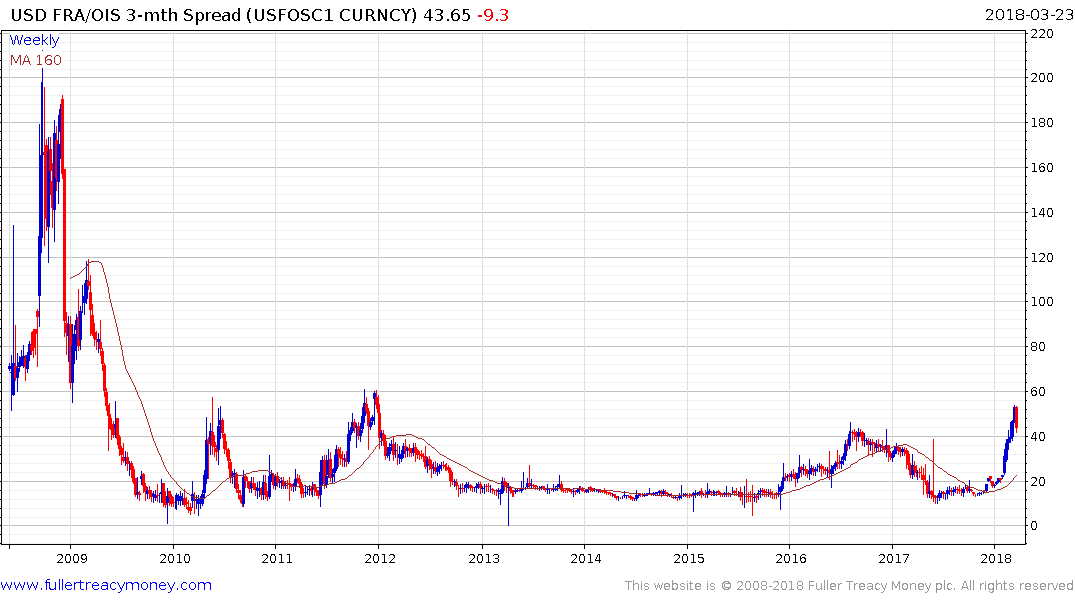Higher Libor-OIS Is New Normal But Don't Fret, Says CS' Pozsar
This article by Liz Capo McCormick for Bloomberg may be of interest to subscribers. Here is a section:
“BEAT is forcing foreign banks to substitute FX swaps with unsecured funding and also leads to temporary overfunding on the margin,” he wrote. “BEAT explains why cross-currency bases are tighter while Libor-OIS is wider, and also introduces upside risks” to the forward Libor-OIS spread, he wrote.
The gauge measuring where Libor-OIS is seen moving in coming months -- the June FRA/OIS spread -- reached about 54 basis points this month, from around 18 at the end of last year. It retreated to 44 basis points Friday.
The impact is strongest in foreign-exchange swaps because the shift is creating excess funding for those headquarters.
That cash is being lent into the foreign-exchange swaps market, preventing the basis from narrowing for now, wrote Pozsar.
Total excess funding that may build up at headquarters of European, Japanese and Canadian banks with branches and broker- deal affiliates in the U.S. could tally as much as $450 billion, he estimates. To the extent that this money had been raised in FX swaps at headquarters, the change may reduce demand for dollars via the basis swaps market, he says.
Even without the tax effect, Libor has been rising amid a deluge of Treasury-bill issuance since the U.S. debt ceiling was raised in February, which has helped drive bill rates to the highest since 2008. The increase has forced banks to boost commercial paper rates to lure buyers.
“BEAT is redistributing pressures from the cross-currency basis to the Libor-OIS basis,” Pozsar wrote. “The pressures we should be seeing in cross-currency bases from bill issuance are showing up in the Libor-OIS basis instead. This suggests Libor- OIS could widen more from here.”
The pop is overnight index swap spreads since the beginning of the year has a lot of people thinking about what this all means. The most visceral memory everyone has of the LIBOR-OIS, or the FRA/OIS spread which is the equivalent, is the surge in unsecured paper funding costs that were associated with the credit crisis back in 2008. So, the big question is whether that is relevant today?
There are definitely going to be unintended consequences from the changes to the USA’s tax code and how the profits of its corporations are going to be treated and what that means for their funding costs. If overnight index swap rates are rising, they represent an additional premium domestic companies pay for short-term borrowing. That’s not particularly good news.

The spread pulled back sharply on Friday which suggests at least near-term resistance below 60 basis points. I believe it is relevant to point out that the issues with commercial paper funding costs became pressing at levels above a spread of 60 basis points before the credit crisis. This is a relevant spread to monitor but it is not currently flashing red warning signals.


